This week’s news includes: “Mayor for All” Brandon Scott, Hogan lifts COVID restrictions, D. Watkins’ personal reflections on the unrest, and more reporting from Baltimore Magazine, Community Architect Daily, Baltimore Brew, and others.
This week’s news includes: “Mayor for All” Brandon Scott, Hogan lifts COVID restrictions, D. Watkins’ personal reflections on the unrest, and more reporting from Baltimore Magazine, Community Architect Daily, Baltimore Brew, and others.

Brandon Scott Pledges To Be A Mayor For All
by Emily Sullivan
Published June 10 in WYPR
Excerpt: Brandon Scott, Baltimore City’s Democratic mayoral primary winner, delivered his acceptance speech outside of his grandmother’s brick row house on Loyola Northway in Park Heights on Wednesday afternoon, surrounded by family.
“Our campaign was about proving to the world that a young black man who grew up in the forgotten Baltimore here in Park Heights could survive everything that you have to live through in Baltimore: the gun violence, underfunded schools living in neighborhoods where vacant homes live in areas where you know that you are not going to be recognized even as human by your own city government,” he said. “That somebody could survive all of that to be the leader of this city.”
The people who are called on to be nonviolent are the people with the ability to do the least amount of damage.
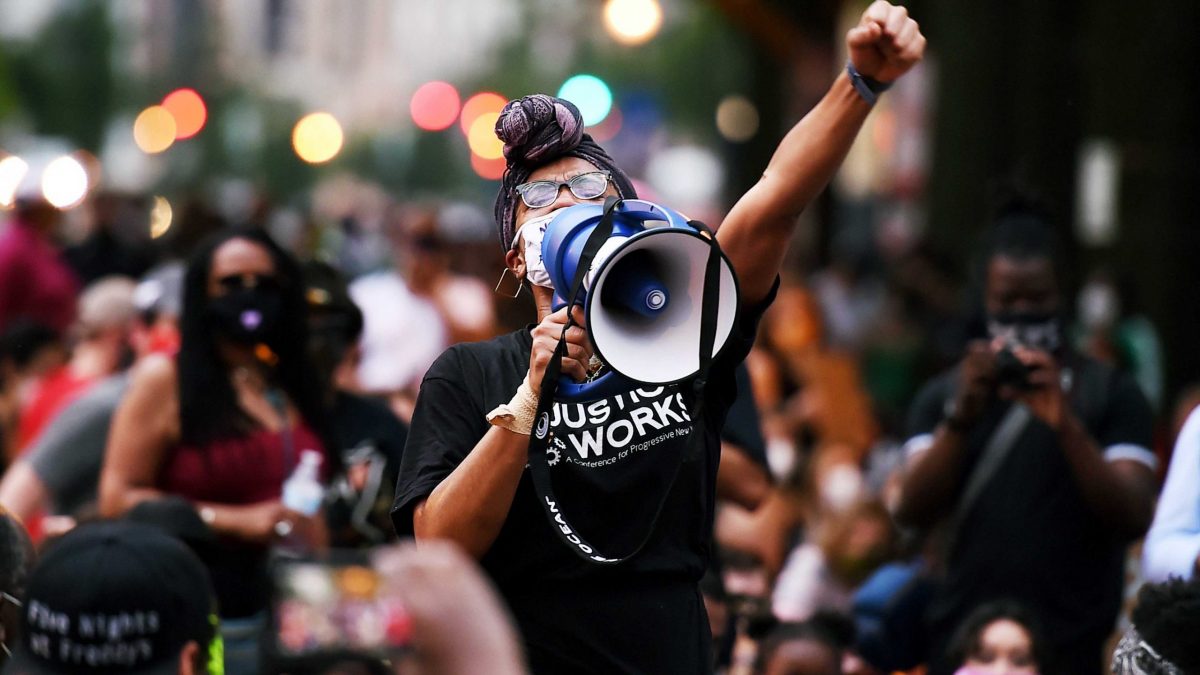
Why Ta-Nehisi Coates is hopeful
By Ezra Klein
Published June 5 in Vox
The first question I asked Ta-Nehisi Coates during our recent conversation on The Ezra Klein Show was broad: What does he see right now, as he looks out at the country?
“I can’t believe I’m gonna say this,” he replied, “but I see hope. I see progress right now.”
Coates is the author of the National Book Award winner Between the World and Me and The Water Dancer, among others. We discussed how this moment differs from 1968, the tension between “law” and “order,” the contested legacy of Martin Luther King Jr., Donald Trump’s view of the presidency, police abolition, why we need to renegotiate the idea of “the public,” how the consensus on criminal justice has shifted, what Joe Biden represents, the proper role of the state, and much more.
But there’s one particular thread of this conversation that I haven’t been able to put down: There is now, as there always is amid protests, a loud call for the protesters to follow the principles of nonviolence. And that call, as Coates says, comes from people who neither practice nor heed nonviolence in their own lives. But what if we turned that conversation around? What would it mean to build the state around principles of nonviolence, rather than reserving that exacting standard for those harmed by the state?
Many police departments are in the thrall of powerful police unions that promote an “us versus them” culture that dehumanizes citizens and covers up officer misconduct, whether that misconduct is based on racism or on something else.
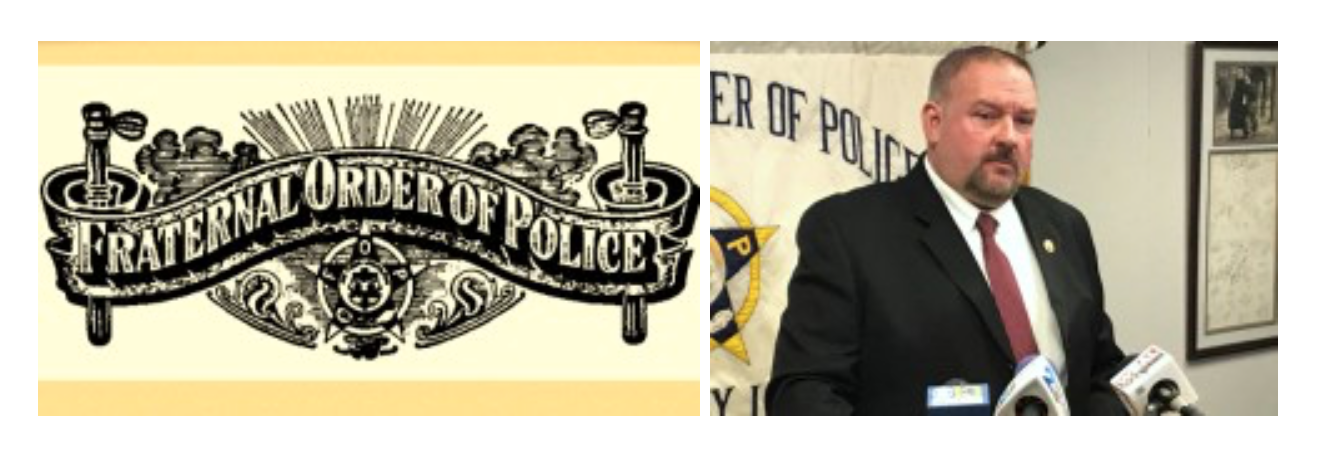
One way to detoxify the police culture: rein in their union
by David A. Plymyer
Published June 9 in Baltimore Brew
Excerpt: With George Floyd’s last moments under the knee of a Minneapolis policeman seared into our collective consciousness, Americans are raising long overdue questions about the pervasiveness of racial hatred in our white-dominated culture, especially in police departments.
Some are demanding that police departments be “defunded” or “disbanded” and rebuilt from scratch.
As we grapple with those big issues, consider this major driver of abhorrent police behavior – one that could be stamped out now with sufficient political will and changes made in the law:
Many police departments are in the thrall of powerful police unions that promote an “us versus them” culture that dehumanizes citizens and covers up officer misconduct, whether that misconduct is based on racism or on something else.
For five years, we’ve kind of been on the ground and we’ve been fighting for [Baltimore City State’s Attorney] Marilyn Mosby to do the right thing and drop the charges.
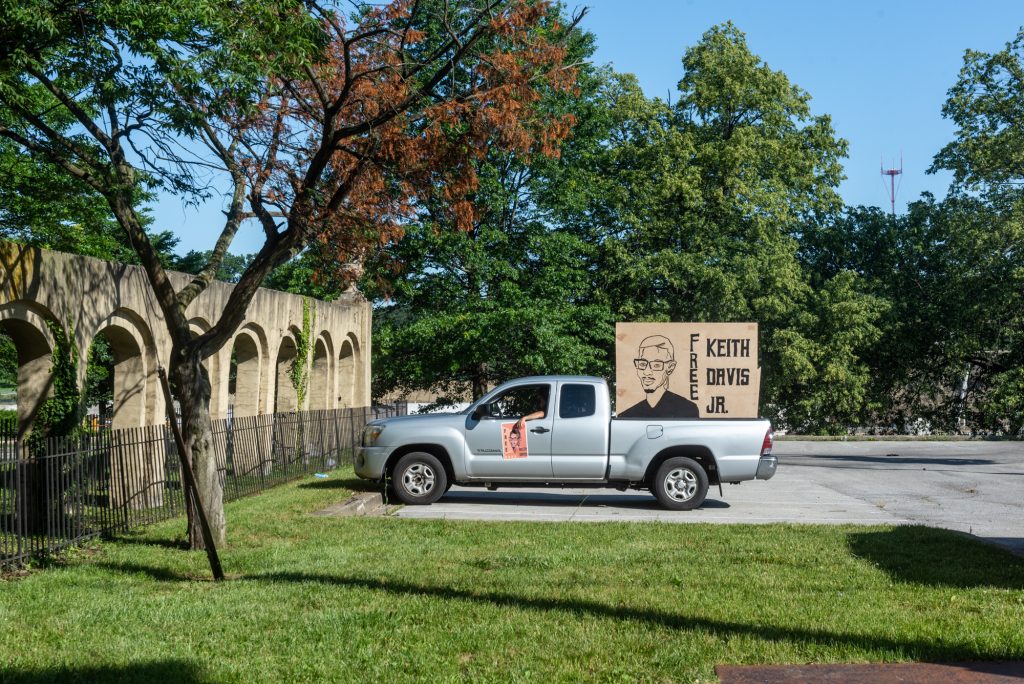
Caravan For Keith Davis Jr. Highlights Prosecutors’ Role In The Problems With Policing
by Lisa Snowden-McCray and Brandon Soderberg
Published June 8 in Baltimore Beat
Excerpt: Yesterday, on the fifth anniversary of Baltimore Police shooting Keith Davis Jr., his wife Kelly Davis and more than 50 others adorned their cars with “Free Keith Davis Jr.” signs and caravanned across Baltimore. They honked, hollered, and chanted in front of homes of the prosecutors and judges responsible for taking Davis Jr. to trial five times and sentencing him for a crime he has maintained he did not do.
“For five years, we’ve kind of been on the ground and we’ve been fighting for [Baltimore City State’s Attorney] Marilyn Mosby to do the right thing and drop the charges,” Kelly said. “This year I wanted to kind of take the narrative back because the police and the State’s Attorney have done an amazing job of pushing the narrative and making people forget that Keith was a police brutality survivor. He survived over 40 shots shot at him by four Baltimore City police officers.”
Imagine the power that would come from a young black mayor, elected because his trustworthiness is bigger than his ambition and personal agenda?
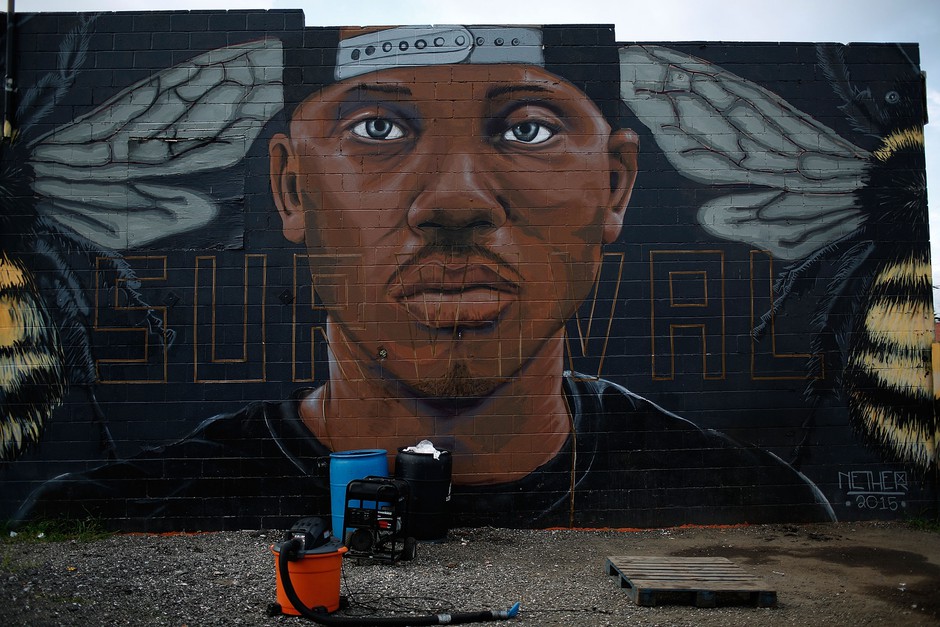
At the intersection of way too many calamities, Baltimore is holding up well
by Klaus Philipsen
Published June 8 in Community Architect Daily
Excerpt: The intersection of a pandemic, unrest about police violence, a White House occupant who is entirely off the rails, an unabated high crime rate, and a never ending local primary is so complicated that it can’t be managed as an all way stop, in which each side gets a turn, one after the other. Instead, the issues plaguing this city are connected and intertwined, in many ways going back to the root cause of America’s original sin.
This situation requires immediate nimble responses, but also a long-term strategy; none of the possible responses are prescribed in a rule book. Baltimore isn’t alone in this year of calamities, but few cities face so many challenges at once.
The hard work starts when the demonstrations end, the cameras leave, and the public stops paying attention.

The day after the protest: A view from the 2015 Baltimore Uprising, and now
by D. Watkins
Published June 6 in Salon
Excerpt: When the cameras leave and the idea of black people “mattering” falls back to the bottom of everyone’s priority list, the real work starts.
Smoky, hollowed-out buildings, busted windows and random single shoes, hair pieces and articles of clothing lying in the gutters of streets covered in empty water bottles, candy wrappers, bent and broken picket signs — that’s the morning after a protest. It’s the same kind of morning I imagine many of the cities across America and across the world have been experiencing lately. Store owners boarding up busted windows, community members sweeping up trash while chatting about the night before, people nursing wounds and tender skin hit with rubber bullets or being released from holding cells.
On Memorial Day in Minneapolis, a white police officer and 19-year veteran of the force named Derek Chauvin took a knee on the back of the neck of George Floyd, an unarmed black man, for more than eight minutes. The whole incident was captured on video, clear enough for us to see and hear Floyd say “I can’t breathe!” while groaning in pain. We can also see Chauvin’s partner Tou Thao watching Floyd lose his life as if nothing is wrong. A total of four cops were involved in George Floyd’s death — J. Alexander Kueng and Thomas Lane are the names of the other two officers. And finally, after global protest, divided countries and millions in damages, all have now been charged — Chauvin with second degree murder, and the other three with aiding and abetting. What was Floyd’s crime? He allegedly tried to buy cigarettes from Cup Foods with a fake $20 bill.
Our governor promised these hard-working people that his administration would be there for them.

State Workers’ Stories on Pandemic Response Conflict With State Officials’
by Hannah Gaskill
Published June 10 in Maryland Matters
Excerpt: Sean Santmyire, an AFSCME Council 3 union member and job specialist for the Maryland Department of Labor, said Tuesday that the agency’s response to the COVID-19 pandemic has been “poor.”
“Shortage of equipment, training and staffing has placed our membership in dangerous positions,” he said.
Even after Gov. Lawrence J. Hogan Jr. (R) mandated non-essential workers to work remotely, Santmyire said unemployment insurance workers were left to report to their offices for several weeks due to a lack of laptops. He said they were not provided extra personal protective equipment.
Obviously, personal protective equipment and computers are not the Department of Labor’s sole challenges.
Maryland’s unemployment rate has sky-rocketed due to layoffs induced by the COVID-19 pandemic, with some people waiting weeks for assistance filing for unemployment insurance — if they can even get through the state’s computer or phone systems at all.
Santmyire told the House Appropriation and Senate Finance committees Tuesday that employees who take unemployment claims over the phone and online were given just four hours of training the night before the new BEACON system was activated.
“The shortage of trained staff who had the proper equipment and training has put many Maryland families without checks and without communication from DoL,” he said. “Because we have so many people who cannot get through to [an unemployment insurance] professional via email or phone, many cannot get answers why they have not received their payment.”
“Our governor promised these hard-working people that his administration would be there for them. In the recent weeks, and now going on months, this promise has fallen by the wayside for these folks, and so many others,” said Santmyire.
Hogan said that Maryland has seen “dramatic” declines in several coronavirus-related measurements, allowing the state to lift more restrictions under phase two of the “Maryland Strong: Roadmap to Recovery” plan.

Maryland to allow reopening of indoor dining, gyms and more
by Marcus Dieterle and Brandon Weigel
Published June 10 in Baltimore Fishbowl
Excerpt: Indoor dining, gyms, childcare centers, outdoor graduation ceremonies and more will be allowed to resume with restrictions, Gov. Larry Hogan announced on Wednesday.
Hogan said that Maryland has seen “dramatic” declines in several coronavirus-related measurements, allowing the state to lift more restrictions under phase two of the “Maryland Strong: Roadmap to Recovery” plan.
But he also cautioned Marylanders to continue protecting themselves against coronavirus.
“The fight against this virus is far from over,” he said. “In fact, now more than ever as we begin to come in contact with more people, we must all continue to remain vigilant.”
Closing the wealth gap while building more Black owned enterprises is critical to addressing inequities that plague us.
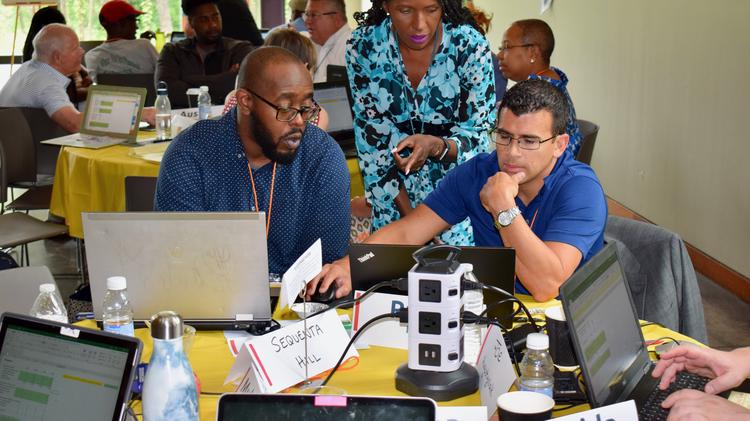
6 steps company leaders can take to address systemic racism
by A. Jay Nwachu
Published June 9 in Technical.ly Baltimore
Excerpt: At social enterprise network Innovation Works (IW), we are taking steps to unpack the issues before us today, understanding their context within history and thinking about sustainable actions for the future. While this is a journey for us, I want to share how our team is approaching this with hopes that it helps my colleagues in Baltimore, as we lead companies that have a potential to truly move us forward. At IW, addressing the racial wealth divide is core to our mission. Closing the wealth gap while building more Black owned enterprises is critical to addressing inequities that plague us.
Most of us will spend close to a third of our lives at work. It is rather difficult to expect anyone to spend that much time within a context and continue to compartmentalize in a healthy manner. As leaders, we owe it to ourselves and our teams to embrace and address these challenges that we have contended with for a long time as a nation.
Like many mothers of the diaspora, we moved to another city (Baltimore) for something better.
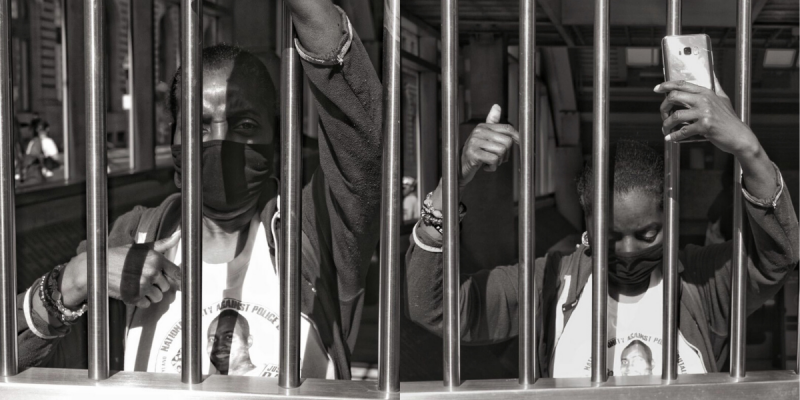
Black Mothers, Daughters, and Aunties: A Collective Sigh Over 2020’s Unrest
by Alanah Nichole Davis
Published June 4 in Baltimore Magazine
Excerpt: I represent the fourth generation of women in my family to live in the United States.
My ancestors were descendants of captive Africans. Post slavery, they voluntarily came to Ellis Island from the West Indies in the early 1900s. They planted themselves in various boroughs of New York City. My skin is filled with beautiful melanin because of them.
I accept and challenge the social implications of that and my womanhood on a daily basis. Like many mothers of the diaspora, we moved to another city (Baltimore) for something better. I learned to listen, take naps for respite, remain playful, fight, and feast on only what serves me from my mother and aunties. During times of unrest, I listen to them even more.